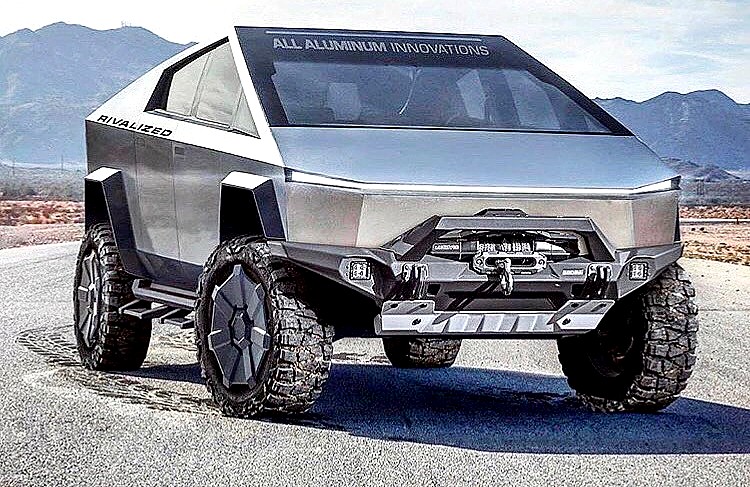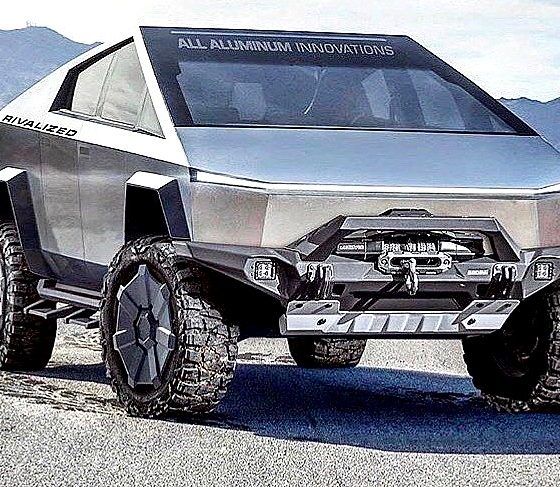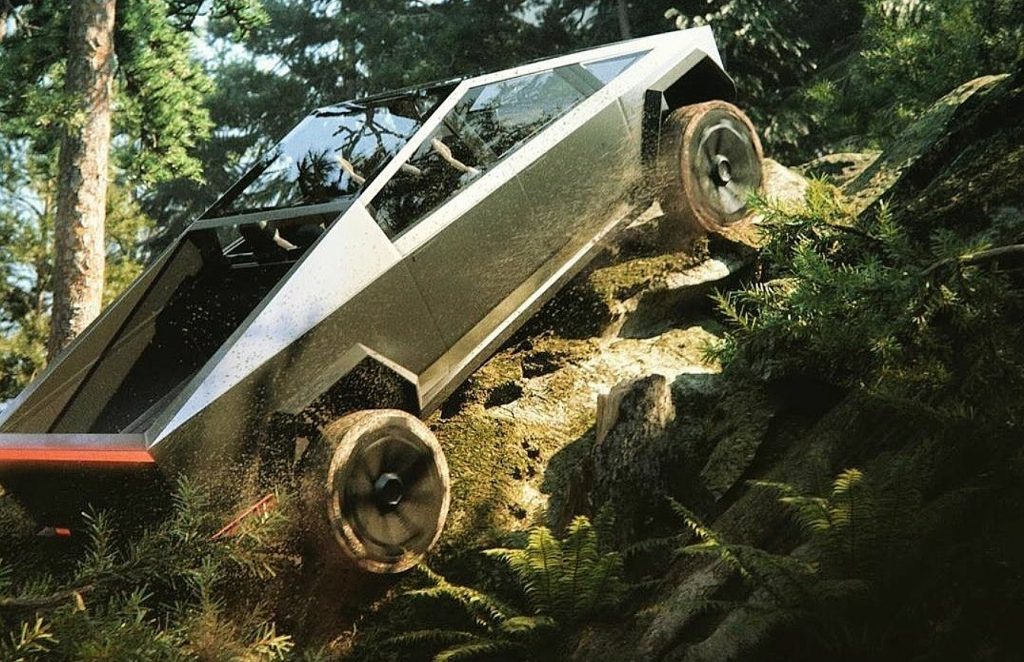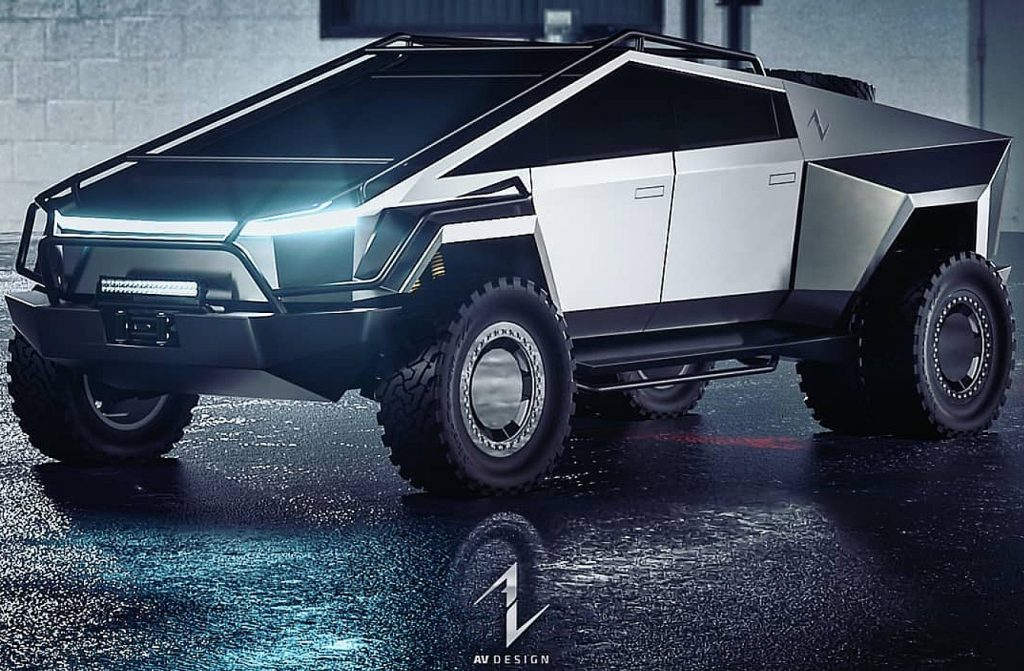

News
The Tesla Cybertruck’s tough character can help address a horrible emissions trend
An emissions problem that seems worse than Dieselgate may be brewing in the United States, and it would likely take a perception shift to battle it well. As indicated by a new federal report from the Environmental Protection Agency’s Office of Civil Enforcement, over half a million owners and operators of diesel pickup trucks in the US have been illegally disabling their vehicles’ emissions control technology during the past decade. This trend, which continues to be popular, have allowed excess emissions equivalent to around 9 million extra trucks on the road.
Intentional Emissions
The EPA’s findings in its report echo the shocking revelations of the Dieselgate scandal, which involved Volkswagen admitting to illegally installing defeat devices in millions of passenger cars worldwide to cheat emissions tests. About half a million of these vehicles were sold in the United States. Yet inasmuch as Dieselgate was shocking, what makes the EPA’s recent report quite alarming is the fact that truck owners themselves are the ones–as well as small auto shops–who are willingly installing the illegal emissions-increasing devices on their pickups.
This makes it extremely difficult to accurately measure the scope of the US pickup truck market’s emissions problem. The EPA’s report estimates that there are over half a million pickup trucks in the US equipped with emissions-increasing devices over the past decade. However, the EPA’s study only focused on devices that were installed in heavy pickup trucks like the Chevy Silverado and the Dodge Ram 2500, which weigh between 8,500 to 14,000 pounds. Considering that some owners of smaller trucks like the Ford Ranger may also be engaged in the same practice, there is a good chance that the US’ pickup truck emissions problem may very well be far bigger, involving millions of vehicles nationwide.
“One reason it is difficult to estimate the full extent of tampering nationwide is that the Air Enforcement Division has reason to believe this conduct occurs within most or all categories of vehicles and engines, including commercial trucks, passenger vehicles, pickup trucks, motorcycles, forestry equipment, and agricultural equipment,” the report read.

Worse than Dieselgate
According to the report, the modifications that “diesel tuners” in the US place in pickup trucks could result in the release of over 570,000 tons of nitrogen dioxide, a substance associated with diseases like heart and lung disease, over the lifetime of the vehicles. This is more than 10x the excess nitrogen oxide emissions attributed to Volkswagen’s Dieselgate vehicles that were sold in the United States. The report further stated that the modified pickup trucks will hit 5,000 excess tons of industrial soot over their lifetime. Industrial soot, also known as particulate matter, is linked to respiratory diseases and higher death rates for COVID-19 patients.
John Walke, an expert in air pollution law at the Natural Resources Defense Council, noted in a statement to The New York Times that the EPA’s findings came at the worst time possible. “A global respiratory pandemic is the worst time to find out that there is this massive cheating by the makers of these devices. That is an astronomically high level of smog-forming pollution. It’s happening at ground level where people are breathing the fumes. And if the problem extends to other vehicles it’s almost unimaginable what the health impact will be,” he said.
Phillip Brooks, a former EPA emissions investigator and a veteran of the Dieselgate case, shared his thoughts on the US pickup truck market’s budding emissions controversy. “The aftermarket defeat device problem is huge. A lot of people just don’t understand what the problem is — your average person buys a vehicle and says, it’s my vehicle, I can do what I want with it. They may not even be aware that these devices are illegal,” he said. “But the real question is impact. If 10 people do it, there’s no impact. But these are numbers that are meaningful for air quality. This is not a great way to express how to be a free American, but there are a lot of people out there who think that way.”

The Need for a Diesel Pickup Predator
To battle such a horrible emissions trend, a change of perception is needed that is not that different from what the Model S ushered in for the high-performance sedan market. Diesel tuners, after all, equip vehicles with illegal emissions-increasing equipment largely to improve a pickup truck’s performance. If a vehicle were to be introduced in the pickup truck market that is so far ahead in durability, power, and performance compared to the veterans of the pickup segment, then large diesels could end up going the way of horse-drawn buggies. There are few vehicles that are better at leading this charge than the Tesla Cybertruck.
Similar to the next-generation Roadster, the Tesla Cybertruck has the potential to be a “smackdown” of sorts to the diesel pickup truck market. It’s a large vehicle with a domineering stance designed to look like a futuristic armored personnel carrier. Avid diesel aficionados tend to poke fun at EVs due to their tame, sleek, looks. There’s nothing of that in the all-electric pickup. The Cybertruck, with its XY, origami-like exoskeleton, is a steel beast: tough, unapologetic, and it looks like something that even a large diesel truck should not cross. This trend continues to the Cybertruck’s performance and utility, with its 0-60 mph time of 2.9 seconds, its 6.5-foot truck bed, its 14,000-lb towing capacity, and 500+ miles of range.
Assuming that Tesla does release the Cybertruck with specs that meet those that were announced during the vehicle’s unveiling, the all-electric pickup could utterly outperform diesel rivals to such a degree that it would be embarrassing for traditional trucks to stand toe-to-toe against the steel monster. And once this is established, perhaps the time would soon come when diesel-powered modified trucks could become laughable in the face of superior vehicles that just happen to have zero emissions. Such a time, while unfortunate for the US’ long history of large diesel trucks, would likely be appreciated by the environment and the populace as a whole.
Read the EPA’s report on tampered US pickup trucks and their emissions below.
EPA-US Emissions Scandal Pickup Trucks by Simon Alvarez on Scribd

News
Tesla FSD fleet is nearing 7 billion total miles, including 2.5 billion city miles
As can be seen on Tesla’s official FSD webpage, vehicles equipped with the system have now navigated over 6.99 billion miles.

Tesla’s Full Self-Driving (Supervised) fleet is closing in on almost 7 billion total miles driven, as per data posted by the company on its official FSD webpage.
These figures hint at the massive scale of data fueling Tesla’s rapid FSD improvements, which have been quite notable as of late.
FSD mileage milestones
As can be seen on Tesla’s official FSD webpage, vehicles equipped with the system have now navigated over 6.99 billion miles. Tesla owner and avid FSD tester Whole Mars Catalog also shared a screenshot indicating that from the nearly 7 billion miles traveled by the FSD fleet, more than 2.5 billion miles were driven inside cities.
City miles are particularly valuable for complex urban scenarios like unprotected turns, pedestrian interactions, and traffic lights. This is also the difference-maker for FSD, as only complex solutions, such as Waymo’s self-driving taxis, operate similarly on inner-city streets. And even then, incidents such as the San Francisco blackouts have proven challenging for sensor-rich vehicles like Waymos.
Tesla’s data edge
Tesla has a number of advantages in the autonomous vehicle sector, one of which is the size of its fleet and the number of vehicles training FSD on real-world roads. Tesla’s nearly 7 billion FSD miles then allow the company to roll out updates that make its vehicles behave like they are being driven by experienced drivers, even if they are operating on their own.
So notable are Tesla’s improvements to FSD that NVIDIA Director of Robotics Jim Fan, after experiencing FSD v14, noted that the system is the first AI that passes what he described as a “Physical Turing Test.”
“Despite knowing exactly how robot learning works, I still find it magical watching the steering wheel turn by itself. First it feels surreal, next it becomes routine. Then, like the smartphone, taking it away actively hurts. This is how humanity gets rewired and glued to god-like technologies,” Fan wrote in a post on X.
News
Tesla starts showing how FSD will change lives in Europe
Local officials tested the system on narrow country roads and were impressed by FSD’s smooth, human-like driving, with some calling the service a game-changer for everyday life in areas that are far from urban centers.

Tesla has launched Europe’s first public shuttle service using Full Self-Driving (Supervised) in the rural Eifelkreis Bitburg-Prüm region of Germany, demonstrating how the technology can restore independence and mobility for people who struggle with limited transport options.
Local officials tested the system on narrow country roads and were impressed by FSD’s smooth, human-like driving, with some calling the service a game-changer for everyday life in areas that are far from urban centers.
Officials see real impact on rural residents
Arzfeld Mayor Johannes Kuhl and District Administrator Andreas Kruppert personally tested the Tesla shuttle service. This allowed them to see just how well FSD navigated winding lanes and rural roads confidently. Kruppert said, “Autonomous driving sounds like science fiction to many, but we simply see here that it works totally well in rural regions too.” Kuhl, for his part, also noted that FSD “feels like a very experienced driver.”
The pilot complements the area’s “Citizen Bus” program, which provides on-demand rides for elderly residents who can no longer drive themselves. Tesla Europe shared a video of a demonstration of the service, highlighting how FSD gives people their freedom back, even in places where public transport is not as prevalent.
What the Ministry for Economic Affairs and Transport says
Rhineland-Palatinate’s Minister Daniela Schmitt supported the project, praising the collaboration that made this “first of its kind in Europe” possible. As per the ministry, the rural rollout for the service shows FSD’s potential beyond major cities, and it delivers tangible benefits like grocery runs, doctor visits, and social connections for isolated residents.
“Reliable and flexible mobility is especially vital in rural areas. With the launch of a shuttle service using self-driving vehicles (FSD supervised) by Tesla in the Eifelkreis Bitburg-Prüm, an innovative pilot project is now getting underway that complements local community bus services. It is the first project of its kind in Europe.
“The result is a real gain for rural mobility: greater accessibility, more flexibility and tangible benefits for everyday life. A strong signal for innovation, cooperation and future-oriented mobility beyond urban centers,” the ministry wrote in a LinkedIn post.
News
Tesla China quietly posts Robotaxi-related job listing
Tesla China is currently seeking a Low Voltage Electrical Engineer to work on circuit board design for the company’s autonomous vehicles.

Tesla has posted a new job listing in Shanghai explicitly tied to its Robotaxi program, fueling speculation that the company is preparing to launch its dedicated autonomous ride-hailing service in China.
As noted in the listing, Tesla China is currently seeking a Low Voltage Electrical Engineer to work on circuit board design for the company’s autonomous vehicles.
Robotaxi-specific role
The listing, which was shared on social media platform X by industry watcher @tslaming, suggested that Tesla China is looking to fill the role urgently. The job listing itself specifically mentions that the person hired for the role will be working on the Low Voltage Hardware team, which would design the circuit boards that would serve as the nervous system of the Robotaxi.
Key tasks for the role, as indicated in the job listing, include collaboration with PCB layout, firmware, mechanical, program management, and validation teams, among other responsibilities. The role is based in Shanghai.
China Robotaxi launch
China represents a massive potential market for robotaxis, with its dense urban centers and supportive policies in select cities. Tesla has limited permission to roll out FSD in the country, though despite this, its vehicles have been hailed as among the best in the market when it comes to autonomous features. So far, at least, it appears that China supports Tesla’s FSD and Robotaxi rollout.
This was hinted at in November, when Tesla brought the Cybercab to the 8th China International Import Expo (CIIE) in Shanghai, marking the first time that the autonomous two-seater was brought to the Asia-Pacific region. The vehicle, despite not having a release date in China, received a significant amount of interest among the event’s attendees.








